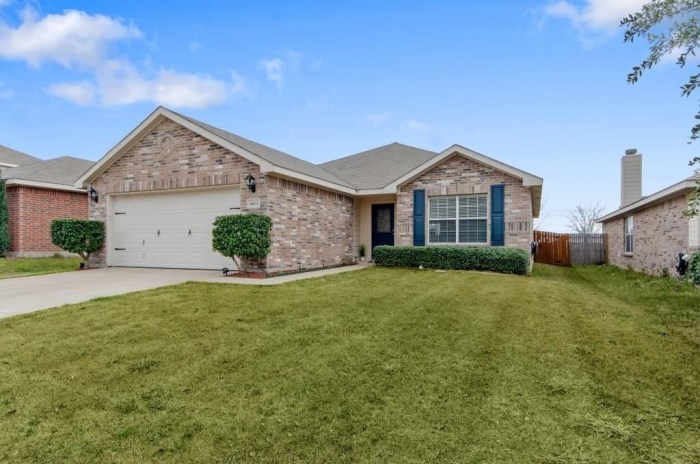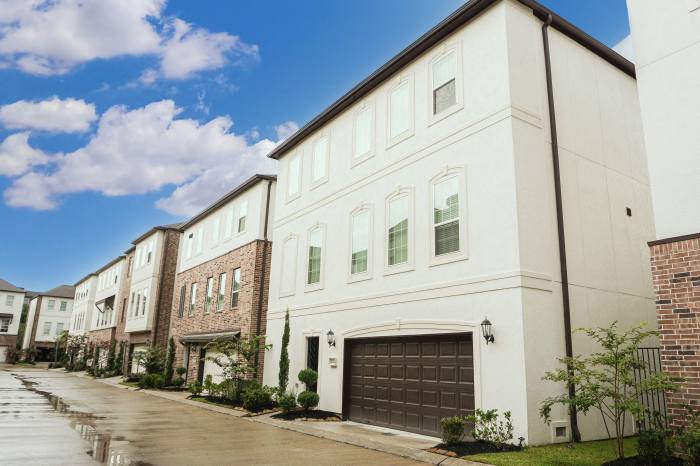House for Rent Texas Your Guide to Finding the Perfect Place
Texas Housing Market Overview
House for rent texas – The Texas rental market is currently experiencing robust growth, driven by a combination of population influx and a relatively strong economy. This dynamic environment presents both opportunities and challenges for renters seeking accommodation across the state.
Current State of the Texas Rental Market

Source: homebuyercreator.com
Texas boasts a diverse and competitive rental market. High demand, particularly in major metropolitan areas, often leads to elevated rental prices. However, the availability of rental properties varies significantly across different cities and regions, influencing overall affordability. Factors such as new construction and economic fluctuations play a role in shaping the market’s trajectory.
Key Factors Influencing Rental Prices in Texas Cities
Three key factors significantly impact rental costs across various Texas cities: population growth, job market strength, and the availability of new housing inventory. Rapid population growth in cities like Austin and Dallas has intensified competition for rental units, driving prices upward. Strong job markets attract more residents, further fueling demand. Conversely, areas with substantial new construction may experience more moderate rent increases.
Rental Cost Comparison: Austin, Houston, Dallas, and San Antonio
The following table provides an overview of average rental costs for one-, two-, and three-bedroom apartments in four major Texas cities. Note that these are average figures and actual costs can vary based on location, amenities, and property condition.
| City | 1-Bedroom | 2-Bedroom | 3-Bedroom |
|---|---|---|---|
| Austin | $1,800 | $2,400 | $3,200 |
| Houston | $1,400 | $1,800 | $2,400 |
| Dallas | $1,600 | $2,100 | $2,800 |
| San Antonio | $1,200 | $1,500 | $2,000 |
Types of Rental Properties Available in Texas

Source: dfwurbanrealty.com
Texas offers a wide variety of rental properties to suit different lifestyles and budgets. Understanding the pros and cons of each type is crucial for making an informed decision.
Categories of Rental Properties and Their Attributes
Renters in Texas can choose from apartments, houses, townhouses, and condos. Each type presents unique advantages and disadvantages concerning space, privacy, amenities, and cost.
- Apartments: Typically offer less space and privacy but often include amenities like pools and fitness centers. Rent usually includes utilities like water and trash.
- Houses: Provide more space and privacy but often require more maintenance and responsibility for utilities. They may or may not include amenities.
- Townhouses: Combine the privacy of a house with the convenience of shared amenities like a community pool or clubhouse. They often require less maintenance than houses.
- Condos: Similar to apartments but often located in upscale buildings with added amenities and a more luxurious feel. Maintenance fees are typically higher.
Finding Rental Properties in Texas
Several methods exist for locating rental properties in Texas, each with its own strengths and weaknesses. Careful consideration of these methods is essential to ensure a successful and safe search.
Methods for Searching for Rental Properties
Renters can utilize online listings, real estate agents, or direct contact with landlords to find suitable properties. Each approach presents distinct advantages and disadvantages.
- Online Listings (e.g., Zillow, Apartments.com): Offer a wide selection but may include inaccurate or outdated information. Requires careful screening of listings.
- Real Estate Agents: Provide personalized assistance and expertise but may charge fees. Offers access to properties not publicly listed.
- Direct Contact with Landlords: Can lead to more favorable lease terms but requires more effort in finding available properties. May involve less transparency.
Avoiding Rental Scams
Be wary of listings that seem too good to be true, request payments before viewing the property, or pressure you into quick decisions. Verify landlord identities and property details independently before making any commitments.
Lease Agreements and Tenant Rights in Texas
Understanding the key components of a Texas lease agreement and tenant rights is crucial for both landlords and tenants. This knowledge helps prevent disputes and ensures a smooth rental experience.
Key Components of a Texas Lease Agreement
A standard Texas lease agreement typically includes details about the rental property, lease term, rent amount, payment schedule, security deposit, tenant responsibilities, and landlord responsibilities. Reviewing the lease carefully before signing is essential.
Tenant Rights and Responsibilities
Texas law protects tenants’ rights, including the right to a habitable dwelling, privacy, and reasonable notice before eviction. Tenants are responsible for paying rent on time, maintaining the property in good condition, and adhering to the terms of the lease agreement.
Finding a house for rent in Texas can be a competitive process, depending on the area and time of year. If you’re open to other locations, however, you might consider exploring options like those available in California; for example, check out this site for houses available: house for rent in sacramento ca. Returning to the Texas market, remember to factor in your budget and desired amenities when searching for your ideal rental property.
Resolving Landlord-Tenant Disputes
Disputes can be resolved through mediation, arbitration, or legal action. Texas law provides procedures for addressing various landlord-tenant issues, including lease violations and eviction processes.
Factors Affecting Rental Costs in Texas

Source: rentcafe.com
Several factors significantly influence rental costs across Texas. Understanding these factors provides valuable insight into the dynamics of the rental market.
Significant Factors Influencing Rental Prices
Location, size, amenities, and property condition are major determinants of rental prices. Prime locations in desirable neighborhoods command higher rents. Larger units with modern amenities generally cost more than smaller, less updated ones. The overall condition and maintenance of a property also affect its rental value.
Seasonality and Rental Rates
Rental rates in Texas can fluctuate seasonally, with peak demand and higher prices often occurring during the warmer months (spring and summer) when people are more likely to relocate. Conversely, lower demand during the colder months (fall and winter) may lead to slightly lower rental rates in some areas.
Impact of Location on Rental Costs
Rental costs vary significantly across Texas cities and neighborhoods. For example, Austin’s central areas typically have higher rental rates compared to its suburban areas. Similarly, affluent neighborhoods in Dallas and Houston tend to have higher rental costs than less-affluent areas. A visual representation would show a map of Texas with darker shades of color representing higher rental costs concentrated in major metropolitan areas and lighter shades representing lower costs in rural areas and smaller towns.
Neighborhood Guides for Renters: House For Rent Texas
Choosing a neighborhood is a crucial step in the rental process. This section provides brief guides for three major Texas cities, highlighting popular renter-friendly neighborhoods.
Neighborhoods in Austin, Houston, and Dallas, House for rent texas
| City | Neighborhood | Description |
|---|---|---|
| Austin | Downtown | |
| Austin | South Congress (SoCo) | |
| Houston | Montrose | |
| Houston | The Heights | |
| Dallas | Uptown | |
| Dallas | Bishop Arts District |
FAQ Section
What are the typical application fees for renting in Texas?
Application fees vary but typically range from $35 to $100.
How long is a standard lease term in Texas?
Standard lease terms in Texas are usually 6 months to 1 year, but shorter or longer terms are possible.
What are my rights as a tenant regarding repairs in Texas?
Texas law requires landlords to make necessary repairs affecting tenants’ health and safety within a reasonable time frame. Specific timelines vary depending on the nature of the repair.
Can a landlord refuse to rent to me because of my credit score?
While landlords can consider credit scores, they cannot discriminate based solely on credit history. Other factors like rental history and income are also considered.




















